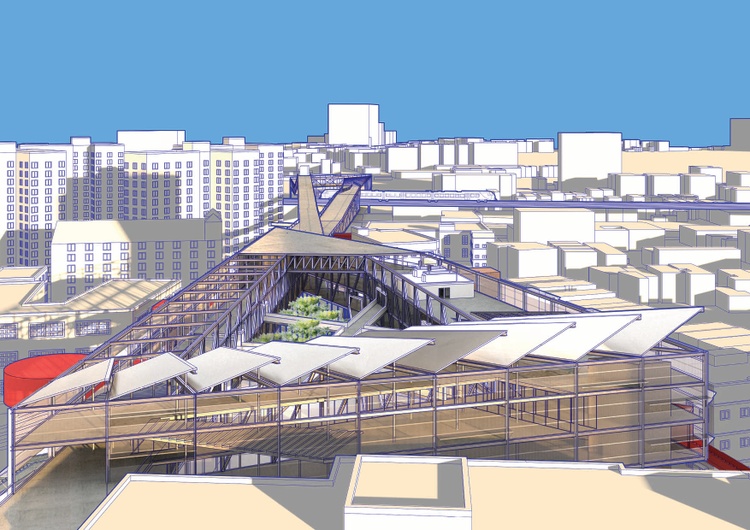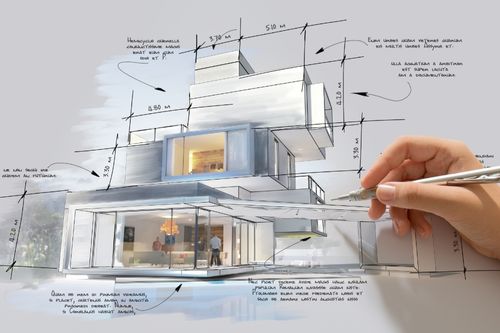Discover Ingenious Designs with Leading CDA Architects for Your Next Project
Discover Ingenious Designs with Leading CDA Architects for Your Next Project
Blog Article
Comprehending the Collaborative Process Between Architects and Engineers in Modern Construction Projects
The collaborative procedure in between designers and engineers is essential in contemporary building projects, as it balances design intent with design expediency. This collaboration not only influences the aesthetic and practical aspects of a task however likewise plays an important function in addressing sustainability challenges. By using efficient communication methods and leveraging innovative innovations, such as Building Details Modeling (BIM), groups can work extra cohesively. Nonetheless, the complexities of this collaboration frequently present special difficulties that can hinder development. Checking out these characteristics exposes insights that might considerably influence project end results and overall market standards.
The Significance of Cooperation
The collaborative synergy between designers and designers is essential for the successful awareness of any kind of building and construction project. This partnership unites distinctive competence and viewpoints, allowing the assimilation of cutting-edge design with useful design remedies. By functioning with each other, architects and engineers can guarantee that a job not only fulfills visual and functional requirements but also follows security, sustainability, and monetary restrictions.
Partnership promotes a shared vision, assisting in the positioning of objectives and expectations from the beginning. This positioning is important in attending to prospective difficulties and mitigating dangers that might occur during the project lifecycle. In addition, a collaborative approach enables the reliable appropriation of sources, enhancing both time and cost.
The importance of cooperation expands to the iterative process of layout and building, where feedback from designers can notify architectural decisions, leading to even more practical and sustainable layouts. Alternatively, designers can inspire designers to think artistically regarding how to achieve architectural stability without compromising imaginative intent. Eventually, the collaborative partnership between engineers and engineers is not just helpful; it is fundamental to the production of top notch, practical, and innovative constructed atmospheres that meet the needs of culture.
Communication Techniques and Devices
Reliable communication strategies and tools are essential for promoting cooperation between engineers and engineers throughout the job lifecycle. Developing clear channels of interaction is necessary to guarantee that all team participants are straightened with job purposes, timelines, and responsibilities. Routine conferences, both in-person and virtual, supply possibilities for stakeholders to discuss development, address concerns, and make notified choices.
Utilizing job monitoring software, such as BIM (Building Info Modeling) systems, boosts collaboration by allowing real-time sharing of style alterations and technical specs. These tools assist in openness, permitting architects and engineers to imagine modifications and analyze their influence on the overall project.

Shared Goals and Task Vision

Establishing common objectives involves open dialogue and a thorough understanding of each self-control's payments. Designers generally concentrate on layout intent, spatial connections, and customer experience, while designers emphasize structural honesty, systems functionality, and compliance with guidelines (cda architects). When these viewpoints are aligned, the result is a natural job that complies with both creative ambitions and technical expediency
In addition, a well-defined project vision promotes liability amongst group participants, encouraging each participant to take possession of their duty in achieving the desired result. Routine check-ins and collective workshops can better enhance this dedication, enabling adjustments to be made as the project evolves. Ultimately, a shared vision not just boosts synergy yet additionally boosts the top quality of the last deliverable, bring about effective task conclusion.
The Duty of Modern Technology
Leveraging technology has ended up being important in boosting cooperation between architects and engineers. Structure Details Modeling (BIM) stands out as a pivotal innovation, enabling both engineers and designers to create detailed see page 3D designs that encapsulate design intent and structural stability.
In addition, cloud-based systems enable smooth cooperation, allowing project their explanation stakeholders to gain access to and update job data from anywhere. This promotes a culture of transparency and responsibility, as modifications can be tracked and examined in real-time. In addition, mobile applications more boost communication, offering on-site teams with immediate access to task requirements and updates.
Arising modern technologies such as fabricated knowledge and artificial intelligence are additionally starting to play a function in predictive analysis, helping teams recognize possible problems before they occur. Ultimately, the duty of modern technology in architecture-engineering partnership not only improves operations performances however likewise enhances innovation, bring about even more successful task end results. By accepting these technological advancements, engineers and engineers can ensure an extra cohesive and productive joint process throughout the construction lifecycle.
Instance Studies in Successful Collaborations
Numerous study show the extensive effect of effective collaborations between engineers and engineers on task outcomes. One significant instance is the partnership on the High Line in New York City, where landscape designers, engineers, and metropolitan planners collaborated to transform a deserted rail line right into a dynamic public park. This multidisciplinary strategy not only improved the aesthetic high quality but likewise ensured structural safety and security and environmental sustainability.
An additional exemplary situation is the layout and construction of the Sydney Opera Residence. The collaboration between designer JÃ ¸ registered nurse Utzon and structural engineer Ove Arup exhibited ingenious analytical. Their cooperation enabled the iconic shell-like design while attending to complex engineering difficulties, ultimately causing a classic architectural masterpiece.
The Burj Khalifa in Dubai additionally shows the relevance of joint initiatives. cda architects. The integration of design and engineering knowledge allowed the task group to attain unprecedented heights while adhering to security guidelines and visual vision
These instances emphasize the importance of communication, count on, and shared goals. In today's complicated building atmosphere, such collaborations are necessary to navigating challenges and delivering projects that meet both functional and visionary goals.
Conclusion
To conclude, the partnership in between architects and engineers is crucial for the success of contemporary building jobs. Reliable interaction methods, a shared project vision, and the integration of advanced technologies are crucial elements that promote this partnership. By fostering a society of liability and leveraging devices such as Building Information Modeling (BIM), groups can browse job complexities, ensuring that visual, practical, and sustainability objectives are achieved. Inevitably, this harmony causes ingenious and successful task the original source results.
Report this page